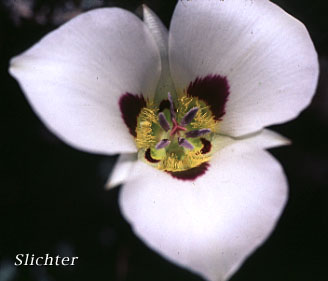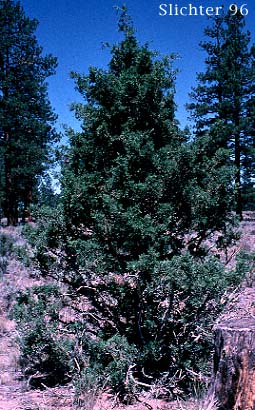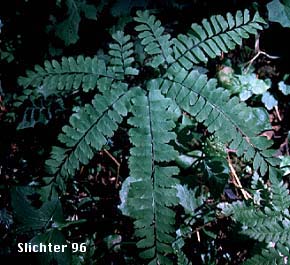

A flower of a mariposa lily, which is a typical member of the Angiospermophytes.
Be able to outline the structural differences and similarities of the following 4 plant groups:
| Structure of Roots, Stems & Leaves | Height | Reproduction | |
| Bryophytes (Mosses) | Never have roots, but have special roothairs called rhizoids. Simple leaves and stems are non-vascular. | up to 1/2 meter tall. | Spores produced in a capsule at the end of a stalk. |
| Filicinophytes (Ferns) | All have vascular roots, leaves & non-woody stems. | up to 15 meters tall. | Spores produced in sporangia on the underside of the leaves. |
| Coniferophytes (Conifers) | All are trees or shrubs with woody, vascular tissues. Leaves often narrow with a thick waxy cuticle. | up to 100 meters tall. |
Seeds produced from ovules on cone scales of female cones. Male cones produce pollen. |
| Angiospermophytes (Flowering Plants) | Typically have roots, leaves & stems, all with vascular tissue. Some stems are herbaceous, others woody. | up to 100 meters tall. | Seeds produced from ovules within ovaries. Ovaries are female part of flowers. Ovaries develop into fruits to help disperse seeds. |

Western juniper, an example of a coniferophyte, which reproduces using small woody cones.

A maidenhair fern, which is a typical member of the filicinophytes which reproduce using small spore sacs known as sporangia.